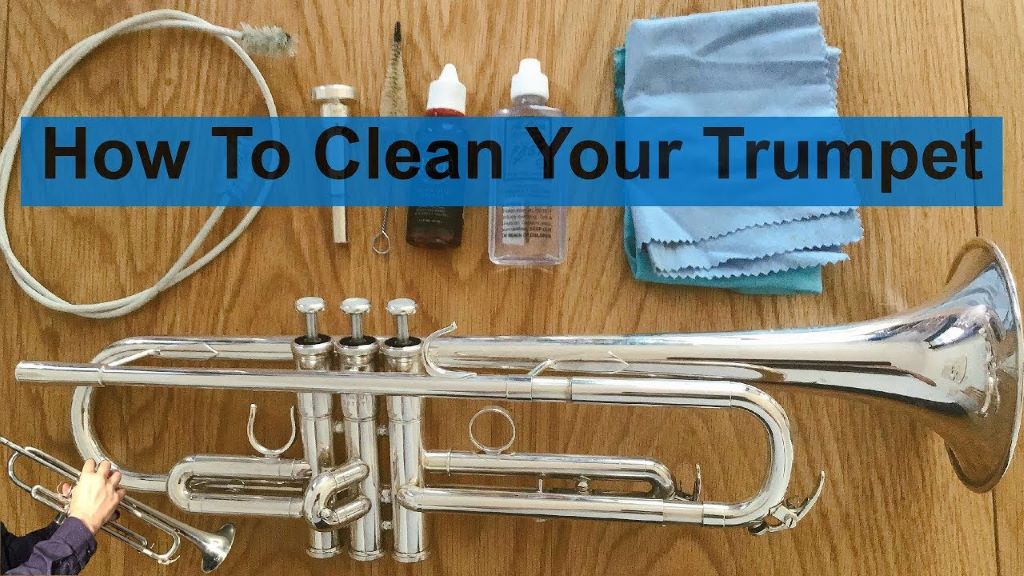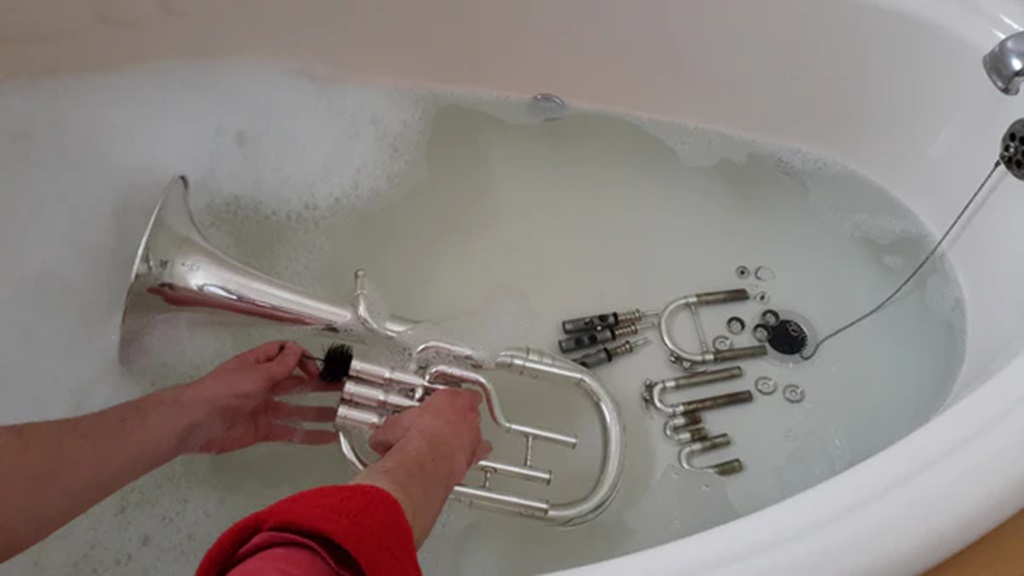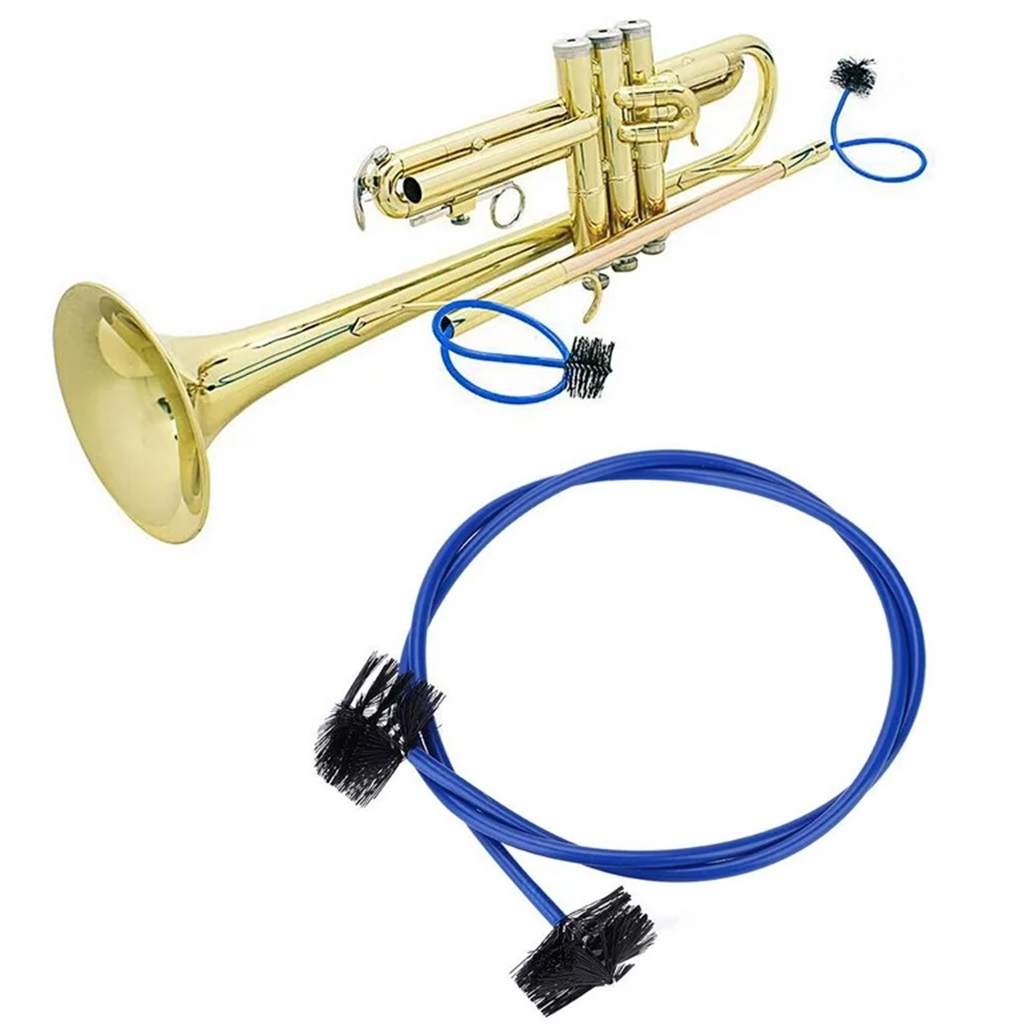
How to Clean a Trumpet
Proper maintenance of your trumpet is crucial for its longevity and optimal performance. Cleaning your trumpet is a vital aspect of instrument care, which not only enhances its appearance but also plays a significant role in its sound quality. Regardless of whether you’re a seasoned player or just starting, understanding how to clean a trumpet is essential to keep it in top condition. Regular cleaning can help prevent the buildup of dirt, grime, and bacteria, which can affect the trumpet’s sound quality and even cause damage to its delicate components.
By following the proper cleaning techniques, you can ensure that your trumpet stays in excellent condition and performs at its best every time you play. In this comprehensive guide, I’ll walk you through the step-by-step process how to clean a trumpet, sharing valuable tips and insights to keep your trumpet in top-notch condition.
Table of Contents
ToggleWhy Cleaning Your Trumpet Matters

Before diving into the cleaning process, let’s explore why it’s crucial to keep your trumpet clean. Imagine your trumpet as a finely tuned engine; regular maintenance is key to its smooth operation. A dirty trumpet can hinder performance and lead to various issues like stuck valves, reduced airflow, and compromised sound quality. By incorporating a cleaning routine into your trumpet care, you’ll not only preserve its aesthetics but also enhance its playability.
Materials You’ll Need
Gather the following materials before you start cleaning your trumpet:
- Valve oil
- Slide grease
- Warm water
- Mild dish soap
- Snake brush
- Valve brush
- Soft cloth or microfiber towel
- Valve casing brush
- Mouthpiece brush
- Lint-free cloth
Step-by-Step Cleaning Process
1. Disassemble Your Trumpet
Begin by disassembling your trumpet. Remove the mouthpiece, slides, and valves. Take care not to force anything, and be mindful of the parts you’re handling.
2. Soak the Parts
Fill a basin with warm water and add a small amount of mild dish soap. Submerge the disassembled trumpet parts in the soapy water. Let them soak for 15-20 minutes to loosen any accumulated grime.
3. Clean the Slides and Valves
Use a snake brush to clean the slides thoroughly. For valves, use a valve brush to reach inside the valve casing and remove any debris. Be gentle to avoid scratching or damaging the delicate surfaces.
4. Scrub the Valve Casings
Take a valve casing brush and carefully clean the valve casings. This ensures the valves move freely and smoothly. Use a twisting motion with the brush for effective cleaning.
5. Clean the Mouthpiece
Use a dedicated mouthpiece brush to clean the interior of the mouthpiece. Ensure you reach all areas to eliminate any residue that may affect your playing.
6. Rinse and Dry
After cleaning each part, rinse them thoroughly with warm water to remove any soap residue. Dry each component with a lint-free cloth to prevent water spots.
7. Apply Valve and Slide Lubricants
Apply a small amount of valve oil to each valve and slide grease to the slides. Ensure even distribution for smooth movement.
8. Reassemble Your Trumpet
Carefully reassemble your trumpet, ensuring each part is properly aligned and securely in place. Pay close attention to valve orientation and proper alignment of slides.
Things to Consider While Cleaning a Trumpet
Cleaning a trumpet is more than just a routine task—it’s a crucial part of trumpet care that can significantly impact your playing experience and the lifespan of your instrument. Here are several key considerations to keep in mind as you embark on the journey of cleaning your trumpet:
1. Frequency of Cleaning
How often you clean your trumpet depends on how frequently you play. For avid players, a monthly cleaning routine is recommended to prevent the buildup of grime and preserve the trumpet’s performance. Infrequent cleaning can lead to issues like stuck valves and compromised sound quality.
2. Disassembly Technique
Proper disassembly is the foundation of effective trumpet cleaning. Handle each part with care, ensuring you follow the correct process for removing the mouthpiece, slides, and valves. Avoid applying excessive force, as this can cause damage to delicate components.
3. Soaking Duration and Soap Selection
When soaking trumpet parts, be mindful of the duration and soap choice. A basin of warm water with a small amount of mild dish soap works wonders. Soak the parts for 15-20 minutes to loosen accumulated grime without causing any harm to the trumpet’s finish or internal components.
4. Brushing Techniques
Utilize specialized brushes for different trumpet parts. A snake brush is excellent for cleaning slides, while a valve brush and casing brush are essential for reaching inside valves and casings. Employ a gentle twisting motion to effectively remove debris without causing damage.
5. Mouthpiece Care
The mouthpiece is a critical component that requires special attention. Use a dedicated mouthpiece brush to clean the interior thoroughly. Pay attention to detail, reaching all areas to ensure a clean and hygienic playing experience.
6. Rinsing and Drying Process
After cleaning each part, rinse them thoroughly with warm water to remove any soap residue. Drying is equally important; a lint-free cloth helps prevent water spots. Ensure all parts are completely dry before reassembly to prevent issues like corrosion.
7. Lubrication Techniques
Applying valve oil and slide grease is a vital step in maintaining optimal trumpet performance. Ensure even distribution of valve oil on each valve and apply slide grease to the slides. This promotes smooth movement and helps prevent sticking.
8. Reassembly Precision
When reassembling your trumpet, pay close attention to precision. Align each part correctly and secure them in place. Incorrect assembly can lead to issues during play, affecting sound quality and playability.

9. Storage Practices
Consider where and how you store your trumpet. Keep it in a protective case to shield it from dust, moisture, and sudden temperature changes. Proper storage minimizes the risk of tarnishing and ensures your trumpet remains in top condition between playing sessions.
10. Regular Maintenance Checks
In addition to regular cleaning, conduct periodic maintenance checks. Inspect valves, slides, and other components for signs of wear or damage. Addressing issues promptly can prevent more significant problems and extend the life of your trumpet.
By considering these factors and incorporating them into your trumpet cleaning routine, you’ll not only enhance the instrument’s longevity but also enjoy a consistently high level of performance.
FAQs
Q1: How often should I clean my trumpet?
A1: It’s advisable to clean your trumpet at least once a month, or more frequently if you play regularly.
Q2: Can I use any soap for cleaning my trumpet?
A2: Use a mild dish soap to clean your trumpet. Avoid harsh chemicals, as they can damage the finish and internal components.
Q3: Should I oil my valves every time I clean my trumpet?
A3: While it’s not necessary to oil your valves every time, it’s good practice to apply valve oil regularly for optimal performance.
Q4: Can I clean my trumpet in a dishwasher?
A4: No, never put your trumpet in a dishwasher. The heat and water pressure can damage the instrument.
Q5: How can I prevent tarnish on my trumpet?
A5: Wipe your trumpet with a soft cloth after each use, and store it in a protective case to minimize exposure to air and moisture.
Conclusion
Maintaining your trumpet properly is crucial to keep it in top-notch condition and produce a high-quality sound. Regular cleaning is the key to achieving this goal. To get started, you should disassemble your trumpet and clean each part separately. Use a soft, lint-free cloth to wipe down the instrument and remove any dirt, grime, or fingerprints.
For hard-to-reach areas, use a specialized cleaning brush to remove any debris. Make sure to clean the mouthpiece thoroughly, as this is where most of the bacteria and germs accumulate. To embark on the journey of starting an instrument rental business, begin by acquiring high-quality instruments, and meticulous care is essential for their longevity. After cleaning, rinse each part with lukewarm water, and then dry everything with a clean towel. Additionally, it’s advisable to oil the valves and slides every few weeks to ensure smooth and fast action, ensuring the instruments you offer to aspiring musicians are always in optimal condition for a harmonious musical experience.
By incorporating these steps into your trumpet care routine regularly, you’ll ensure that your instrument remains in excellent condition and produces a fantastic sound for years to come. Happy playing!





